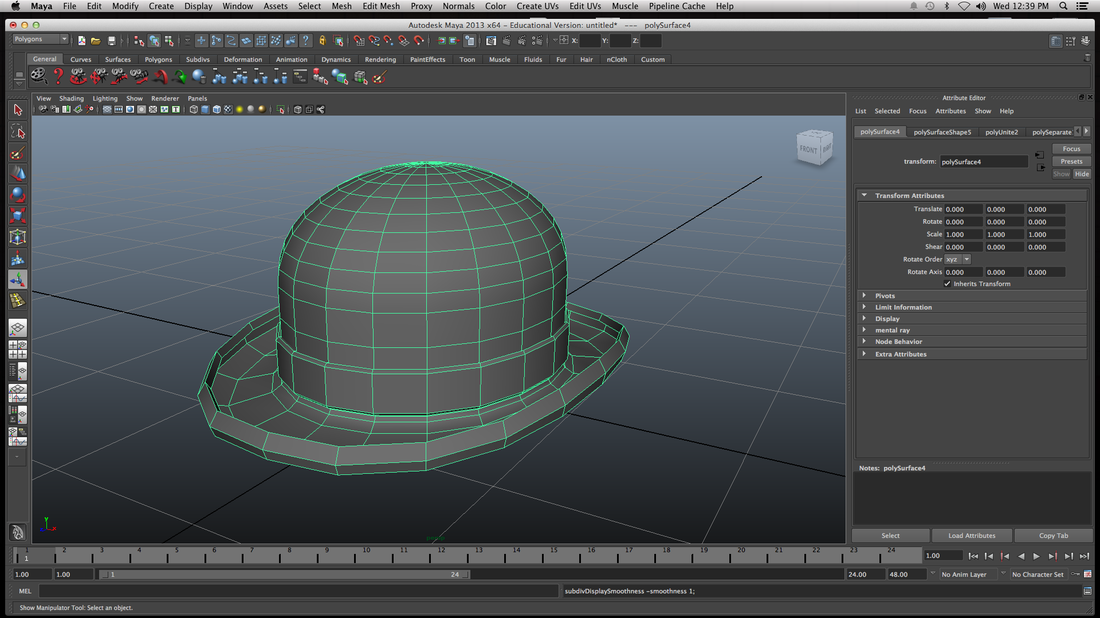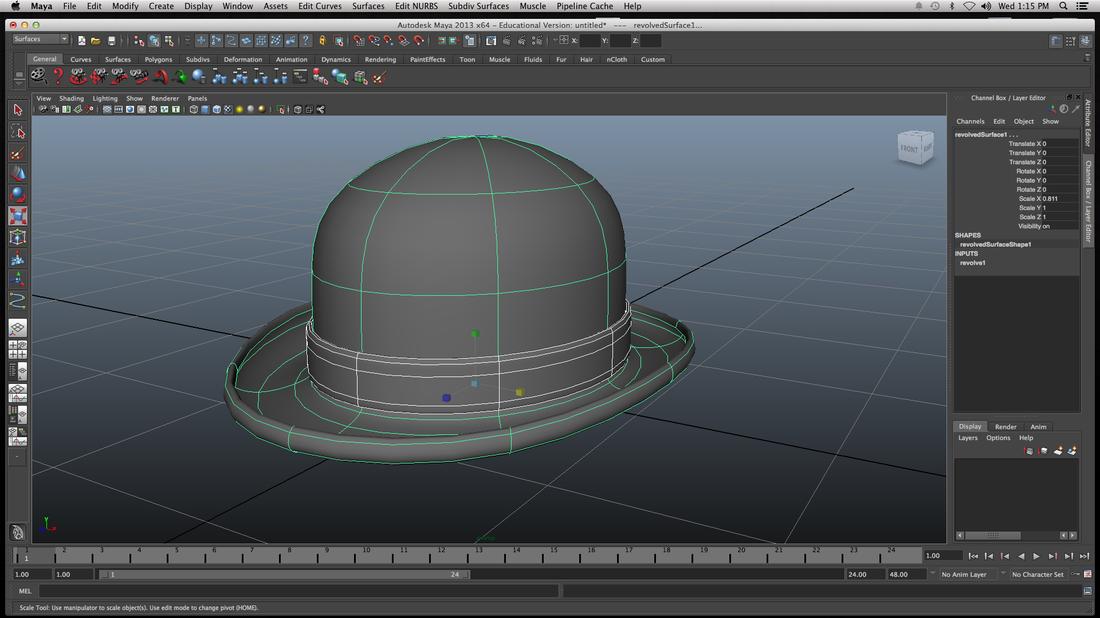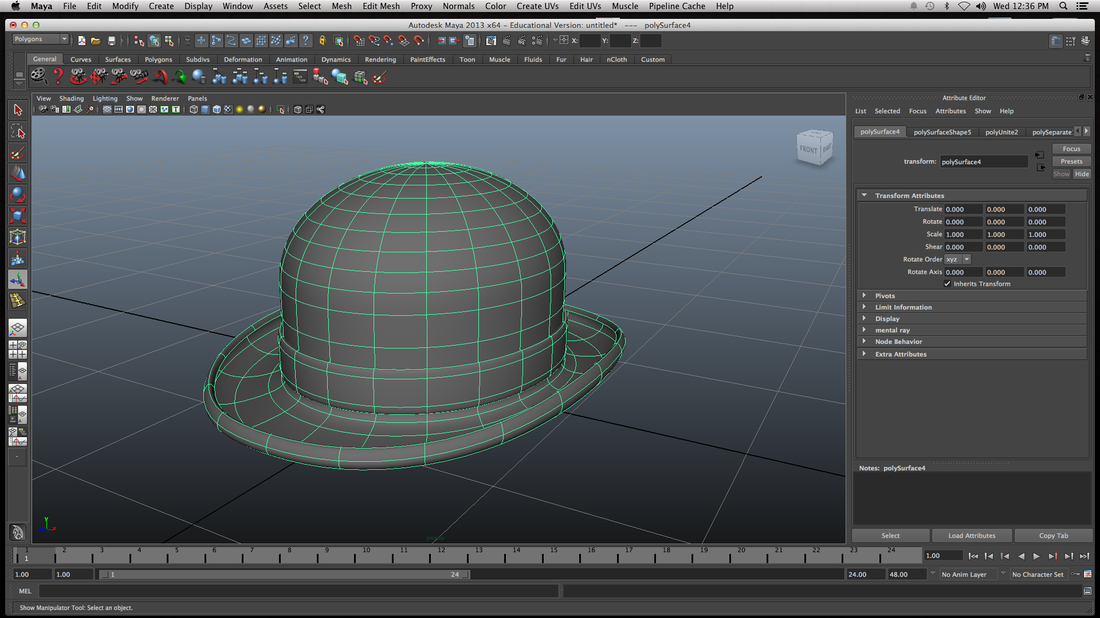Modeling
Polygon Modeling

This is the absolute first step in making any project three dimensional. Modeling in of itself is making three dimensional shapes. There are three different types of geometry (what we call 3d models) that we can use. The first and most popular is Polygons. The best version of polygonal modeling is a collection of quadrilateral (4 sided) shapes that are joined together to form a 3d shape. (notice the picture above all of the collective faces only have four edges)
SubDivisions
Subdivisions is a type of geometry that is known for its smoothness. Subdivisions usually start off life as a Polygon first. When they are almost finished they are then converted into a subdivisional surface. The faceted look of polygons disappears as a piece of geometry becomes a Subdivision and yet you can achieve creases and ridges if you want them. This is one of my favorite types of geometry.... Sad thing is they don't render well in Mental Ray, which we will learn about later.
NURBS

A very interesting type of Geometry.NURBS stands for Non-Unison-Rational-B-Splines. I put this in here because when you understand how NURBS are made you begin to understand how to manipulate them. NURBS start off life as a Curve or a group of curves. (Polygons start off as a face or group of faces) When these Curves (B-Splines) are attached together up and down, left to right, and forward to back, the form surfaces. Each curve can be manipulated a number of different ways making them Rational (working together); and yet I can make changes to any curve that does not change the others making them Non-Unison.
I standardly do not teach NURBS to beginning students as Polygons dominate the industry. Advanced students gain tremendous advantages in modeling by understanding how to use the strength of NURBS in their modeling projects.
I standardly do not teach NURBS to beginning students as Polygons dominate the industry. Advanced students gain tremendous advantages in modeling by understanding how to use the strength of NURBS in their modeling projects.
